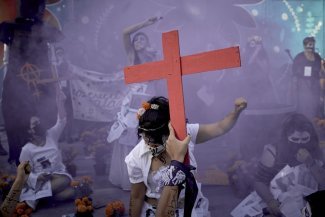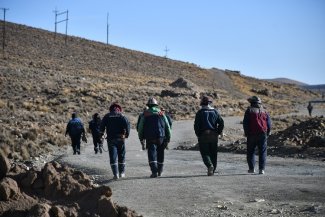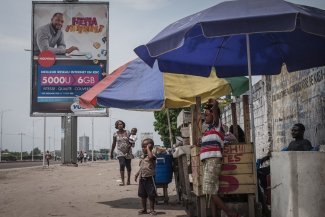Chicago, with the third largest school system in the United States, has been convulsed by the education reform program of its mayor, Rahm Emanuel, since he left a position as White House aide in 2010, and was elected the city’s chief executive.
Emanuel, a former Congressman and investment banker, has become a darling of the US education reform lobby by privatising the public education system through establishing charter schools (privately-owned, for-profit schools that receive public financing), by attacking the Chicago Teachers Union (CTU), and most recently, by pushing forward the largest school closure in US history.
The number of charter schools, which receive public money while being freed of many work and collective-bargaining rules, has doubled in Chicago since 2005, according to the National Alliance for Public Charter Schools.
There are now about 100 of them in the city. The Emanuel administration has called for an additional 60 charter schools by 2017.
This is part of a concerted wave of privatisation nationally. After Hurricane Katrina devastated New Orleans, instead of reopening closed public schools and rehiring teachers, city administrators turned to charter schools that now enroll more than 70 per cent of students.
Chicago’s Center for Urban School Improvement, for instance, set up charter schools bankrolled by the Gates Foundation. One charter network alone, United Neighborhood Organization, runs 13 campuses serving 6,500 students.
Charter schools are almost entirely non-union, and some have fought unionisation efforts by teachers with the same ferocious tactics employed by private industry.
Teacher salaries in Chicago average 74,839 US dollars, according to Chicago Public Schools (CPS), while charter teachers average 51,000 US dollars.
Privatisation
Since the mid-1990s, when Chicago Mayor Richard Daley took control of the city’s schools, the Mayor has had enormous power over them.
Daley held office for 22 years, and implemented a widespread program of privatisation of city services.
That, and the decline of the city’s industrial base, led to the flight of 200,000 people, of whom 180,000 were African-Americans.
Daley began the privatisation of the school system by closing “underperforming” schools, mostly in Black and Latino neighborhoods, and firing large numbers of teachers.
Between 2001 and 2012, the Chicago Public Schools district – the third largest in the country – closed about 100 schools.
Arne Duncan, the CEO of CPS during many of those years, was appointed Secretary of Education by President Barack Obama, who himself rose out of the Chicago political system.
Last September, Mayor Emanuel provoked a bitter nine-day strike by the Chicago Teachers Union (CTU), one of the largest affiliates of the American Federation of Teachers (AFT), by demanding that teachers’ pay be tied to a “merit” system rather than a negotiated salary scale, as well as provisions to weaken their job security.
The union, with widespread support among parents, defeated him.
The strike also became a fight over the privatisation and school closure program, although under US law these are not issues for collective bargaining.
Fightback
Afterwards, in what many view as an attack on the union, the Board of Education proposed in December 2012 to close dozens more schools.
Thousands rallied and marched against the proposal on March 27, organised by the CTU, UNITE HERE Local 1, SEIU Local 1 and the Grassroots Education Movement.
They demanded that the district stop the closures and slow the expansion of charter schools, and focus on investment in public schools in working-class neighbourhoods.
CTU President Karen Lewis urged students: "Don’t let these people take your school!" Over a hundred people were then arrested in acts of civil disobedience outside the City Hall.
AFT President Randi Weingarten sent them a message, saying, "Chicago’s reckless mass school closure agenda will destabilise neighbourhoods, threaten our children’s safety, fail to improve learning or save money, and create a domino effect of destabilisation in schools across the city. It is part of a disturbing trend in cities across the country by the powers that be to ignore what parents, students and teachers demand and what our children need in favor of failed policies."
Out of the 54 schools proposed for closure in 2013, 88 per cent are African-American and only 125 of the 16,119 total students—0.78 per cent—are white.
The racial and economic polarisation of Chicago was visible in the announced closure of George Manierre Elementary, where the surrounding neighbourhood includes both the townhouses of one of the city’s poorest public housing projects, and the burgeoning condominiums of the well-off, costing millions of dollars.
As marches swept the city, young nine-year-old Asean Johnson became a firebrand spokesperson.
Despite not being tall enough to see over the lectern, this young student at Chicago’s Marcus Garvey Elementary School gave a passionate speech condemning the school closings that went viral.
“You should be supporting these schools, not closing them,” he said address Mayor Emanuel.
He also voiced parents’ anger at the racial bias in the closures. “It is 90 per cent of school closings [that affect] African-Americans. This is racism right here," he declared, later adding: “No matter what the color is, no matter if you’re Asian or Chinese, it doesn’t matter. You should not be closing these schools!”
Johnson’s role reflected that of students in other cities fighting closures.
In Philadelphia, where the board is closing 23 schools, mostly in African-American and Latino neighborhoods, students walked out of classes May 17. Weingarten was arrested in an earlier protest on 7 March.
On May 18, Chicago students, parents and teachers organised a three-day March for Educational Justice. Following the march, the CEO of the Chicago Public Schools, Barbara Byrd-Bennett, took four schools off the list, including Marcus Garvey Elementary, Asean Johnson’s school.
“This is a scorched earth policy”
Then on May 22 the Chicago School Board announced its decision to close 54 schools, the largest single school closure in US history.
Parents and teachers shouted and wept as the board deliberated. One, Wanda Wilburn, told them, “These parents and these teachers are not dollar signs. They are people with feelings and lives.”
Their protests saved five schools, at least for the moment, including Manierre Elementary.
The Chicago Sun-Times newspaper said the board’s decision was made "in less time than it takes to boil an egg."
The Chicago Tribune newspaper, a close ally of Mayor Emanuel, called it “a good day for CPS because it begins the process of reinvention,” which it defined as the “benefits of shifting kids into higher-performing schools [and] closing old, bulky, half-empty school buildings.”
Diane Ravich, education professor and former Assistant Secretary of Education, called it “a day of infamy in Chicago and in the history of American education. School boards exist to protect, improve, and support public schools, not to kill them.”
“These were political decisions, not decisions made in the best interests of children,” accused Weingarten.
Karen Lewis called it “a day of mourning for the children of Chicago. Their education has been hijacked by an unrepresentative, unelected corporate school board, acting at the behest of a mayor who has no vision for improving the education of our children. Closing schools is not an education plan. It is a scorched earth policy.”
Then, on June 14, CPS sent layoff notices to 850 school employees, including 550 teachers. The layoffs will hit those teachers working in African American and Latino communities, where the closed schools are concentrated.
Critics accused the board of using false and misleading claims to justify the closures.
46,000 students will be affected, they say, not 30,000.
The board claims public schools had lost 145,000 students.
In reality, enrollment had only declined by 75,000, and of those students, 47,000 of them had gone to charter schools, making the real figure 28,000.
Most of the city’s loss of students happened 30-40 years ago, at the height of deindustrialisation. The school district claimed a “one billion US dollar deficit” made closures necessary, but in fact, since students don’t disappear, and other schools will require more funding, there will be no cost savings at all from the closures.
Some closures seem directly designed to benefit charters.
In 2011, the district tried to close Jacob Beidler Elementary School and turn it over to a charter.
Teachers and neighbourhood parents marched against it, and the proposal was temporarily withdrawn.
This year, it was back on the closure list.
In a reaffirmation of her role in the strike and in fighting the closures, Karen Lewis was reelected CTU President by a wide margin shortly before the board announced the closures.
In response to the decision, she announced the union would join legal action against the district, accusing it of discrimination against disabled students, of racial bias, and of violating the recommendations of independent commissioners.
The union also declared that it would begin a political campaign to oust the mayor, City Council and state General Assembly members who supported the closures.
It called for a voter registration campaign to enroll 100,000 new voters, and to build a neighbourhood organisation to get them to the polls.
“We will go door-to-door in neighborhoods where people’s schools have been shut down and their jobs have been lost,” Lewis said. “We may not win every seat we intend to target but ... we can win some of them.”









